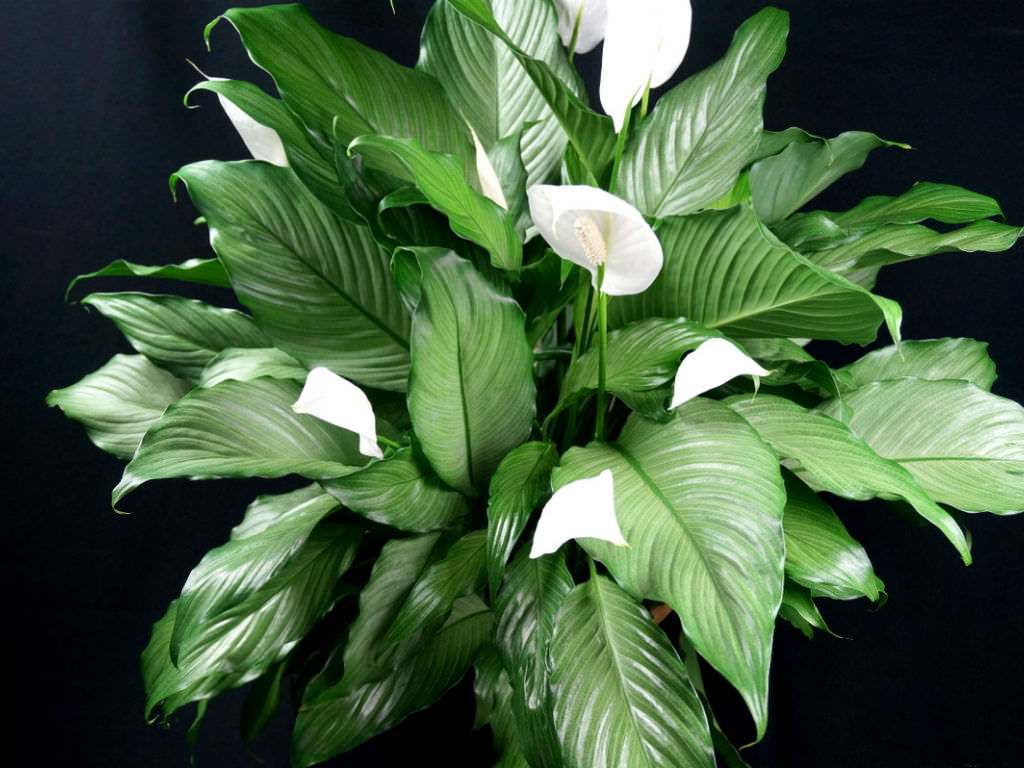
Source worldoffloweringplants.com
Welcome to our ultimate guide on spathiphyllum care, where we will take you step-by-step through everything you need to know to ensure your peace lily flourishes. Known for its graceful appearance and air purifying capabilities, the spathiphyllum, or peace lily, is a popular choice among indoor plant enthusiasts. Whether you’re a beginner or a seasoned plant owner, this guide will equip you with all the knowledge and techniques required to keep your spathiphyllum lush and healthy.
Before we dive into the specifics of spathiphyllum care, let’s explore some basic information about this beautiful plant. The spathiphyllum, native to the tropical regions of America, belongs to the Araceae family. Its distinctive white flowers, surrounded by shiny green leaves, make it a stunning addition to any space. While relatively low-maintenance, understanding and meeting the care requirements of your spathiphyllum is crucial in ensuring its overall well-being.
1. Choosing the Right Environment
Creating Optimal Lighting Conditions
Proper lighting is essential for the healthy growth of your spathiphyllum. While it thrives in bright, indirect sunlight, direct exposure to intense sunlight can scorch its delicate leaves. Find a well-lit spot near a window with filtered light or place your peace lily a few feet away from a north-facing window for optimal growth.
Spathiphyllum can also tolerate low light conditions, making it suitable for offices or rooms with minimal natural light. Consider supplementing its light requirements with fluorescent lights if necessary.
Temperature and Humidity Considerations
The spathiphyllum prefers temperatures between 65°F (18°C) and 85°F (29°C). Avoid exposing your plant to cold drafts or sudden temperature changes, as it can lead to stress and prevent proper growth.
As tropical plants, spathiphyllums thrive in high humidity. Aim to maintain humidity levels between 40% and 60%. If the air in your home or office is dry, consider using a humidifier or placing your peace lily on a tray filled with water and pebbles. Regular misting can also help increase humidity levels.
2. Watering and Soil Care
Watering Frequency and Techniques
Keeping the soil consistently but not excessively moist is key to spathiphyllum care. Water your peace lily when the top inch of soil feels dry to the touch. Avoid overwatering, as it can lead to root rot and other issues. Additionally, make sure to use room-temperature water to prevent shock to the plant.
When watering, give your spathiphyllum a good soak, allowing excess water to drain out of the pot. Empty the saucer underneath to prevent your plant from sitting in standing water.
Choosing the Right Soil
Using well-draining soil is crucial for spathiphyllums. A mix of peat moss, perlite, and potting soil or a pre-made houseplant potting mix work well. These mediums promote proper water drainage, preventing waterlogged soil and root rot.
3. Fertilizing and Pruning
Fertilizing Your Spathiphyllum
Regular fertilization is vital for the healthy growth and development of your peace lily. Use a balanced, water-soluble fertilizer with equal parts nitrogen, phosphorus, and potassium. Apply the fertilizer according to the manufacturer’s instructions, usually once every two months during the growing season.
It’s important not to over-fertilize your spathiphyllum, as this can burn the roots and negatively impact its growth. Always dilute the fertilizer to half the recommended strength to avoid any potential harm.
Pruning and Maintenance
Pruning your spathiphyllum helps maintain its shape, remove dead or yellowing leaves, and improve air circulation. Use sterile pruning shears to trim any unwanted growth and ensure the overall health of your plant. Remember to clean the pruning tools before and after each use to prevent the spread of diseases.
4. Detailed Table Breakdown for Spathiphyllum Care
| Care Aspect | Details |
|---|---|
| Lighting | Bright, indirect light; avoid intense direct sunlight or deep shade. |
| Temperature | Between 65°F (18°C) and 85°F (29°C); avoid cold drafts. |
| Humidity | Maintain levels between 40% and 60%; use humidifiers or pebble trays if necessary. |
| Watering | Keep soil moist but not waterlogged; water when top inch of soil is dry. |
| Soil | Well-draining mixture of peat moss, perlite, and potting soil. |
| Fertilizing | Use a balanced, water-soluble fertilizer every two months during growing season. |
| Pruning | Trim any yellowing leaves or unwanted growth with sterile pruning shears. |
FAQs About Spathiphyllum Care
Q: How often should I water my spathiphyllum?
A: Water your peace lily when the top inch of soil feels dry to the touch. Avoid overwatering to prevent root rot.
Q: Can I place my spathiphyllum in a low-light environment?
A: Yes, the spathiphyllum can tolerate low-light conditions, although it prefers bright, indirect sunlight.
Q: How do I propagate my spathiphyllum?
A: The easiest way to propagate a spathiphyllum is through division. Gently separate the plant into smaller sections, ensuring each section has roots, and plant them in separate pots.
Q: Why are the leaves of my spathiphyllum turning yellow?
A: Yellowing leaves can indicate overwatering, underwatering, or exposure to extreme temperatures. Assess your watering and temperature practices to identify the potential issue.
Q: How can I increase humidity for my spathiphyllum?
A: Increase humidity levels by using a humidifier, placing the plant on a tray with water and pebbles, or regularly misting the leaves.
Conclusion
Congratulations! You are now equipped with the knowledge to successfully care for your spathiphyllum or peace lily. By providing the right lighting, temperature, humidity, and watering conditions, you can ensure the beautiful white blooms and lush foliage of your plant will thrive. Remember to regularly fertilize, prune, and monitor your spathiphyllum to keep it healthy and thriving. Enjoy the natural beauty and air-purifying benefits this remarkable plant has to offer.